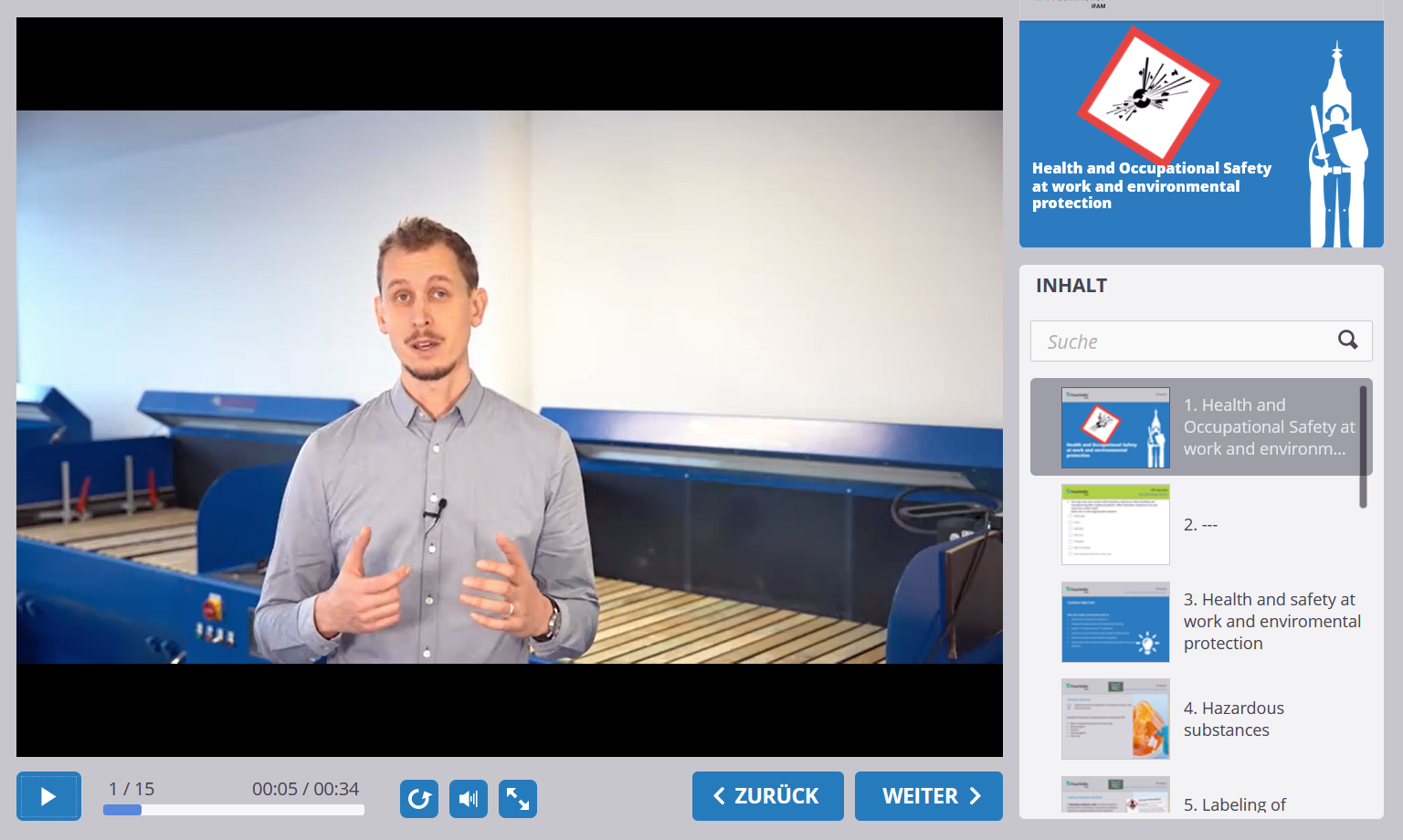From fall 2024, Fraunhofer IFAM will be offering the English-language training course " Fiber Reinforced Plastic Specialist", which covers the entire range of materials, manufacturing and repair methods of the material FRP in theoretical and practical learning units.
Practice-oriented training: "Fiber Reinforced Plastic Specialist" combines online learning with hands-on experience
The course is offered as an online format with an attendance phase for practical training (blended learning). In this interview, Milan Kelch, lecturer at the Fiber Composite Materials Training Center, explains the process and advantages of this course format.
What is the main content of the English-language course for fiber-reinforced plastics specialists that you are supervising this year?
The aim of this course is to qualify participants to manufacture and repair high-quality components made from fiber-reinforced plastics and enable them to instruct executional personnel in these processes. The course focuses on the various components such as fibers, matrix systems, textile semi-finished products, core materials, preforms and prepregs and how these influence the properties and processes. Furthermore, all relevant manufacturing processes such as hand lay-up, vacuum bagging, vacuum infusion, prepreg lay-up with autoclave curing, RTM as well as pressing and pultrusion processes are dealt with theoretically and, for the most part, practically. As maintenance is playing an increasingly important role alongside production, the entire process is covered in theory and practice, from understanding the damage mechanisms, methods for detecting and eliminating damage through to the actual repair.
Can you give us an insight into the blended learning concept and how it promotes the participants' learning process?
Blended learning means that different learning formats are combined with each other. For example, theoretical learning units are combined with practical learning units or online formats with face-to-face formats. This makes learning much more varied for participants and takes even more different types of learners into account.
What are the advantages of this learning method?
One major advantage for participants is the reduction in attendance time and the necessary travel effort. Instead of the previous 15 days, participants are now only in Bremen for 8 days. Instead of three trips to Bremen, often at weekends, only one trip is now necessary. This reduces effort and costs, especially for international participants. From a methodological and didactic point of view, the format also has the advantage that participants can absorb and process the content in the online learning units at their own pace. In similar course formats, we have found that participants are even slightly better prepared for the exams than in a purely face-to-face format.
How is the blended learning course actually structured?
The group of participants is first brought together in a live video meeting and familiarized with the process. In a subsequent two-week online learning phase, the participants work their way through high-quality learning units with many opportunities for interaction, e.g. through quizzes. During this online learning phase, several live meetings offer the opportunity to discuss questions and interactively repeat key learning content. After a one-week break, the face-to-face phase begins in Bremen. Here, each participant has the opportunity to carry out various manufacturing, testing and repair processes in our workshops. Essential theoretical learning content is refreshed in line with the respective unit. The practical and theoretical final examination then takes place on the eighth day of the attendance phase.
Which online tools are used?
The learning content is made available on the Fraunhofer IFAM learning platform. There, participants not only have access to the learning units, but also to further materials, literature references, a glossary and a forum for questions. The links to the live sessions are also made available here. Microsoft Teams is used for these, so that simple participation via the browser is possible.
How is learning success monitored in the blended learning course?
During the online learning phase, participants have the opportunity to check their learning success through quizzes and interactive live repetitions. At the beginning of the face-to-face phase, there is another written exam in which the learning success is checked again.
What challenges and opportunities do you see in the field of fiber composites in the coming years?
Fiber composites, and fibre-reinforced plastics in particular, still have great potential to be used in even more applications due to their unique property profile. The main challenges here are quality-assured use in order to counteract a loss of image and to fully exploit the lightweight construction potential.
